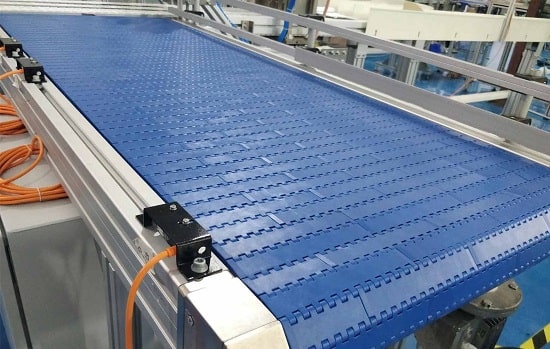How much do you know about conveyor belts? These are used across multiple industries for different purposes. Apart from the conventional belting solutions, plastic modular belting has gradually become the standard in many industries owing to its capabilities related to efficiency improvements.
These belts are durable, positively driven, easy to repair and maintain. They are versatile and can be customized to fit the needs of different manufacturers.
The following guide will introduce you to this kind of conveyor belt.
What is it?
Plastic modular belting refers to a form of conveyor belting that consists of hinge rods and modules constructed in a specific brick pattern to create a belt. These belts are functional owing to sprockets, which are profiled wheels whose job is to provide rotary motion. The usual materials used in this module include acetal, nylon, polypropylene, and polyethylene. Read more about the properties of acetal.
Furthermore, each of these materials is specific in view of temperature resistance, hardness, chemical resistance, friction coefficient, strength, and density. Consequently, plastic modular belting has extensive use in the food processing industry and the industry for paper, cartons, and boxes. These belts are ideal to use for conveyors that incline, decline, and travel around corners, not just traveling straight.
Benefits
Plastic modular belting is widely used in numerous plants owing to its extensive range of applications, which aren’t strictly limited to food. In view of food processing plants, these belts are chosen for their sanitary benefits, such as non-porous thermoplastics, hinge rods only partially exposed, and materials compliant with FDA regulations.
Another indispensable benefit of investing in such belting is the ease of maintenance and repair. In the event of a damaged module, the adjacent plastic rods only need to be extracted for the belt to be fixed, without the need to remove it entirely from the conveyor. Only minimal tools are required for removing the plastic rods, which results in low maintenance and repair costs.
Plastic modular belting is highly appreciated in many industries because of its excellent tracking capabilities. It moves forward by relying on a positive drive, not a friction drive. See this link, https://www.wise-geek.com/what-is-a-friction-drive.htm, for a definition of a friction guide. This results in eliminated slippage and stronger tracking capability with a potential for downtime reduction when tracking repairs.
Another benefit of plastic modular belting is the reduction in costs through low-tension systems. These belts are low-tension systems that enable using a lower number of pulleys. The low-tension nature of these systems reduces installation costs and minimizes the wear and tear to bearings, which extends the product life.
Moreover, this material is durable and reliable, as it undergoes no tearing and fraying. Plastic modules are capable of withstanding harsh environments and provide high resistance to corrosives and abrasives. Most importantly, such modular belting allows simplified corner and turn navigation.
When conveying systems require corners and turns, plastic modular belting responds to the challenge. These systems can navigate around turns and corners, as it uses only a single motor and belt.
Options for customization
This kind of modular belting has various conveyor applications, meaning each line requires its own specific characteristics. Different cleats can be easily added to the belt. The modular character of these belts allows the spacing and height of the cleats to be changed, even after they are initially installed.
Additionally, such belting can be constructed to any length or width while still tracked correctly. There is a multitude of conveyor belts suppliers and manufacturers, such as Belting Edge, offering a wide range of products. Several pitch options are available for heavy loads and tight transfers to be accommodated.
There are open and close hinge designs, the former of which are mainly used in food applications with special rules regarding sanitation. Conversely, close hinge designs have more non-food applications.

How are they different from conventional belts?
Belts made of synthetic fabric are commonly used in airports, fitness centers, retail stores, printing companies, etc. These are light but at the same time very flexible and strong. Such flexibility allows them to transfer small parts, as their diameters can be as low as three millimeters in some cases. Their overall thickness is often lower than one millimeter and always lower than two millimeters.
Such thickness enables small parts to be transferred between conveyors. The smaller the dimensions, the smaller the parts to be transferred. The speed range of these conveyors is considered greater than their plastic counterparts. Plastic modular belts tend to become extremely loud when operating at high speed, which isn’t exactly convenient in locations where loud noise is considered a problem.
Nevertheless, synthetic fabric belts have certain limitations mainly associated with tracking and their friction drive system. While plastic modular belting excels at tracking, synthetic fabric belts have trouble staying centered on the conveyor. As far as their friction drive is concerned, the conveyor might not operate optimally if the designers make wrong material calculations.
Regarding the cost, plastic modular belting is considered costlier compared to the other variants. Although the small blocks used in the construction process are inexpensive, the manpower necessary to assemble these blocks is responsible for increasing the costs. The assembly process hasn’t been made automatic yet.
To sum up
Conveyors have transformed the process of manufacturing.
These are part of everyday life and are of great assistance to businesses in different food and non-food industries!




























